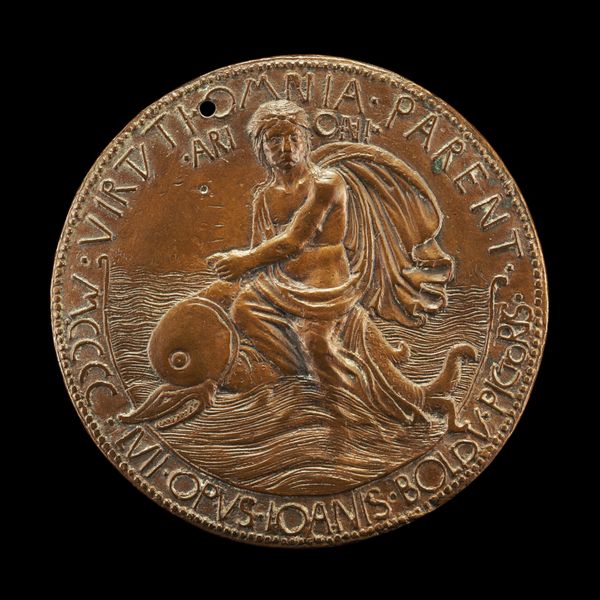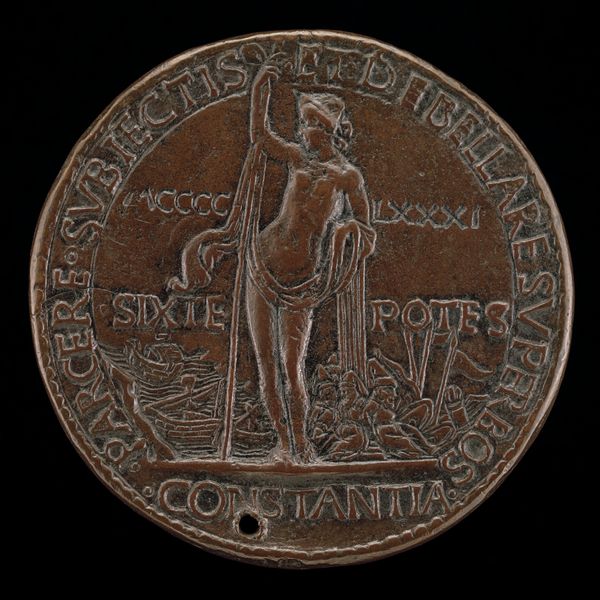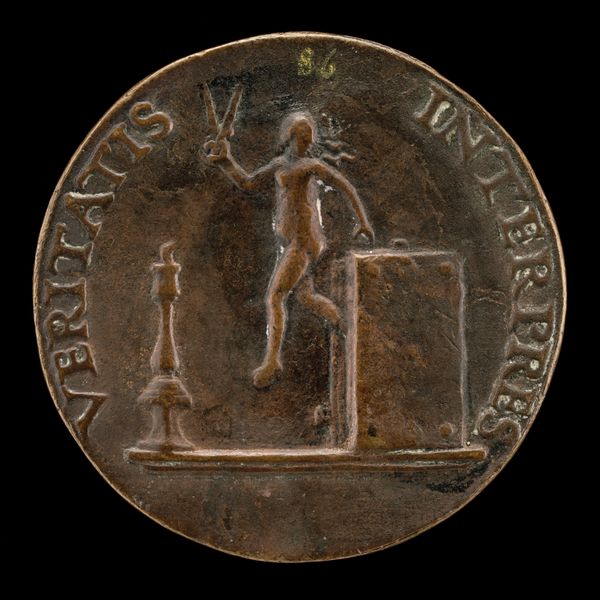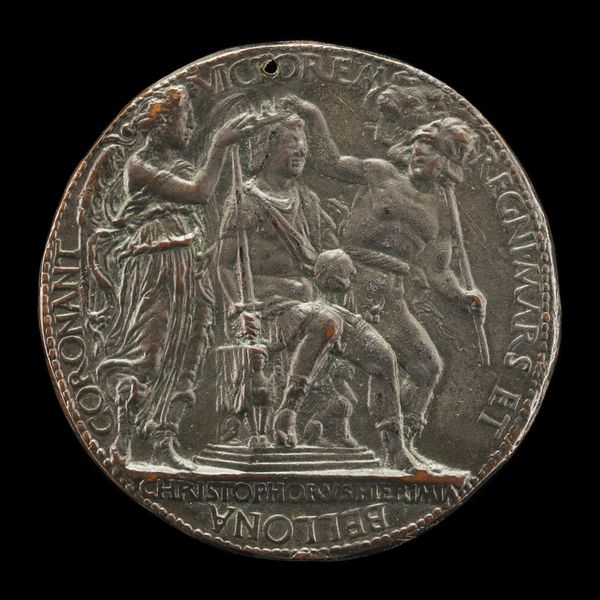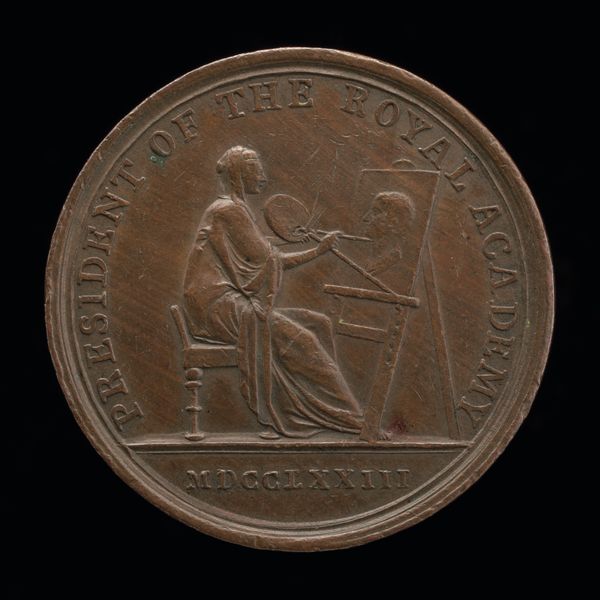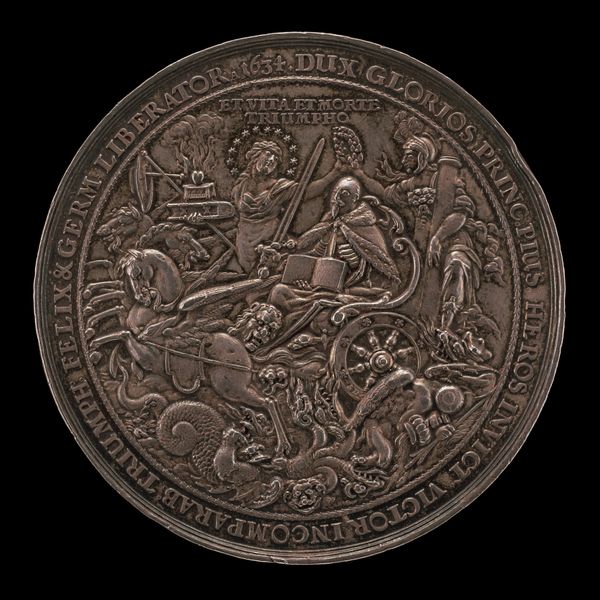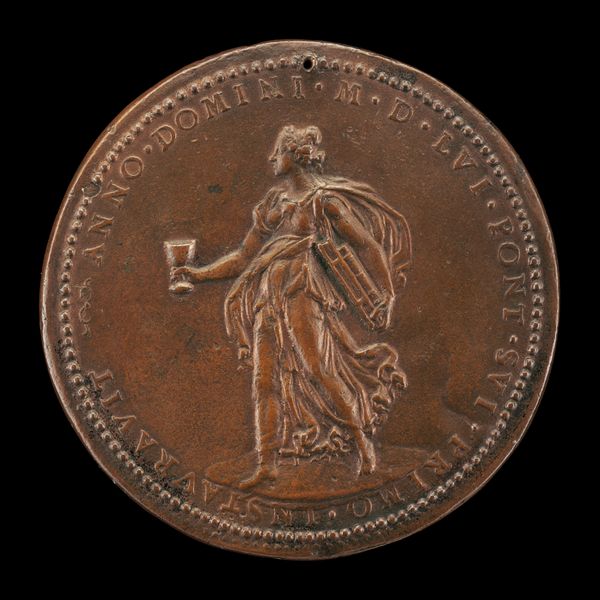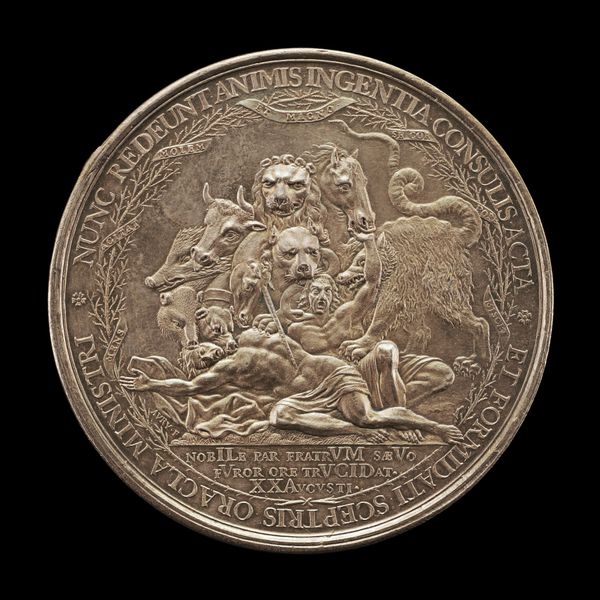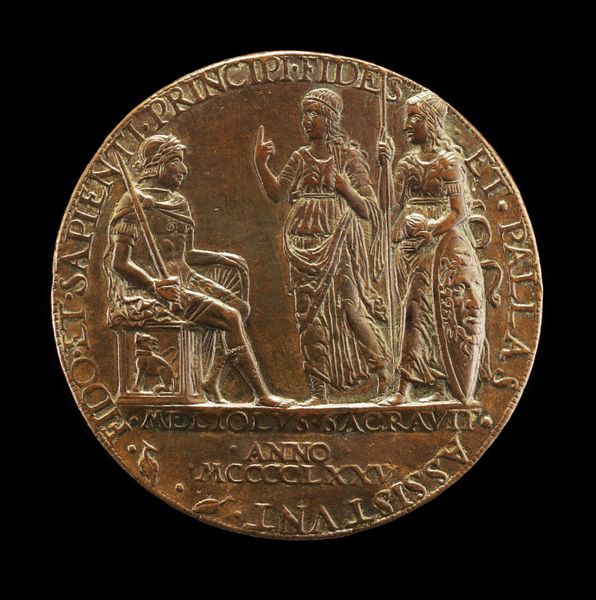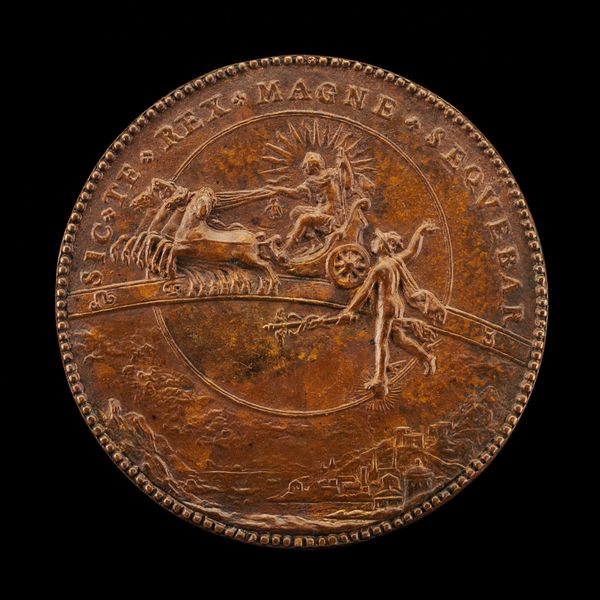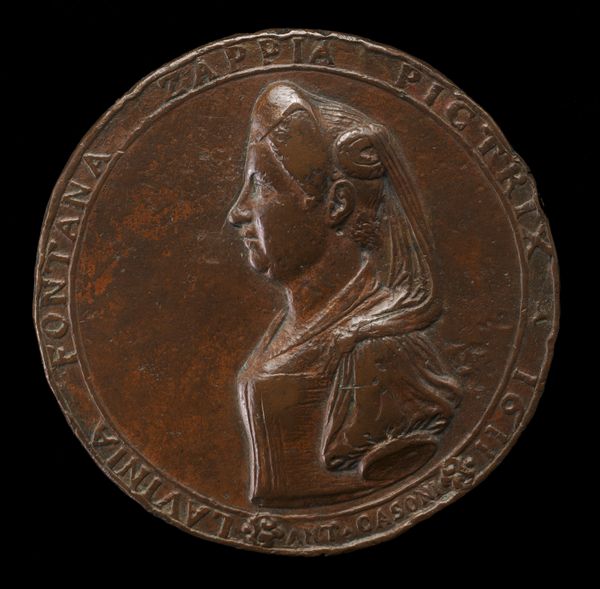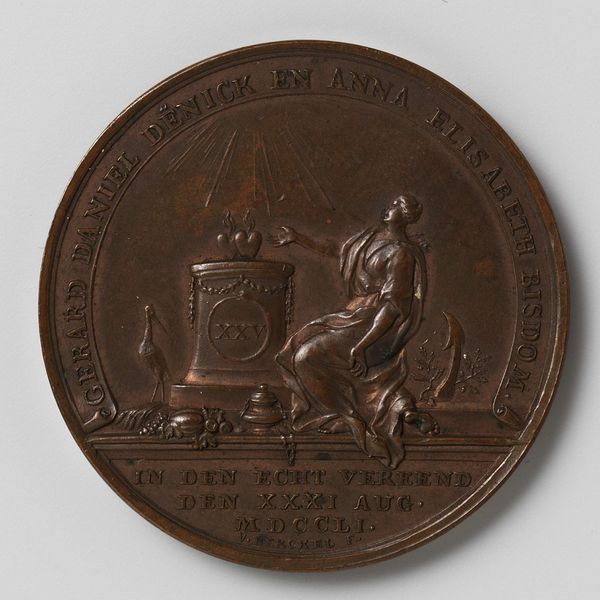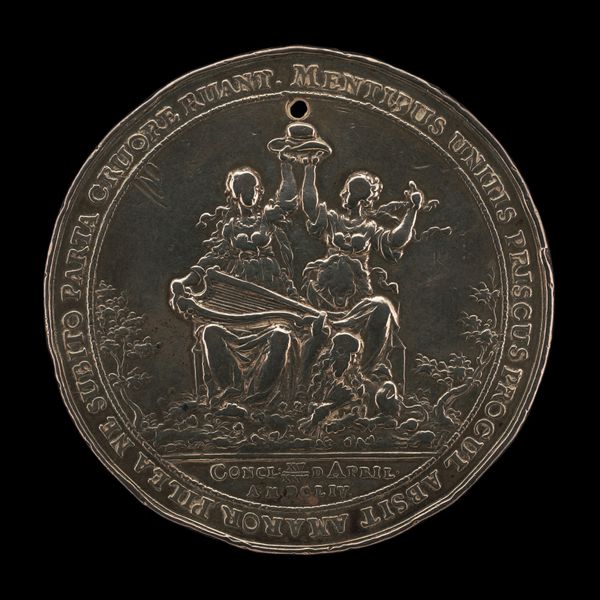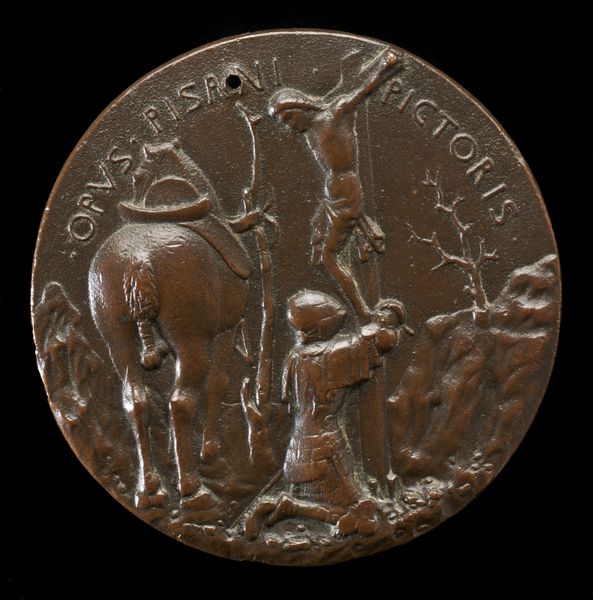![Figure of Inspiration at an Easel [reverse] by Felice Antonio Casone](/_next/image?url=https%3A%2F%2Fd2w8kbdekdi1gv.cloudfront.net%2FeyJidWNrZXQiOiAiYXJ0ZXJhLWltYWdlcy1idWNrZXQiLCAia2V5IjogImFydHdvcmtzLzkwY2IxZmYyLTBmNjUtNGYyMC05ZTJkLTVkYjdmZDAwMzIyYS85MGNiMWZmMi0wZjY1LTRmMjAtOWUyZC01ZGI3ZmQwMDMyMmFfZnVsbC5qcGciLCAiZWRpdHMiOiB7InJlc2l6ZSI6IHsid2lkdGgiOiAxOTIwLCAiaGVpZ2h0IjogMTkyMCwgImZpdCI6ICJpbnNpZGUifX19&w=3840&q=75)
relief, bronze
#
portrait
#
baroque
#
relief
#
bronze
Dimensions: overall (diameter): 6.55 cm (2 9/16 in.) gross weight: 75.12 gr (0.166 lb.) axis: 12:00
Copyright: National Gallery of Art: CC0 1.0
Curator: Immediately, I’m drawn to the light and shadow—the contrast gives it such depth for such a small piece. Editor: We’re looking at "Figure of Inspiration at an Easel", created by Felice Antonio Casone in 1611. It's a bronze relief. Curator: Relief? The detail is amazing. And the circular form…it's so contained, like a world in itself. The artist and artwork exist harmoniously in this space, almost a commentary on self-sufficiency. Editor: Interesting you mention that harmony. Note how Casone's work emerged during the Baroque period; yet how it echoes many attributes of prior traditions as well as reflects that era’s complex politics within artistic representations of the individual, particularly female figures often symbolized concepts, like in this artwork. What could be a deeper consideration of inspiration here? Curator: Visually speaking, there's such confidence in the execution, yet also such a wonderful looseness in her pose. She is inspired, confident, powerful… but notice, she also possesses feminine qualities through her clothing, hair, and body language. Is it that her physical feminine self generates this mental clarity and creativity? This is very striking for its time! Editor: Perhaps also interesting when we consider other portraiture from the 17th century that focused on nobility—we can see her as another type of "nobility," as the artistic or creative mind was, I think, a radical and new source of "noble" identification during the shift of this era, where knowledge, as some historians and scholars say, was indeed “power”. Curator: The line is exquisite—observe the circular inscription along the top. Each detail serves its compositional goal. Each line adds to the other. You truly believe every stroke you see is necessary. What is it actually inscribed with? Editor: It reads: "OPERE PERFETTE GIOIOSO MIMANTE." The latter part is Casone's signature, meaning in Latin "joyfully imitating perfect work,". Curator: Indeed. He perfectly achieved his ambition here in my view. Editor: I'm particularly intrigued by how Casone integrated period visual traditions in what feels like an original context.
Comments
No comments
Be the first to comment and join the conversation on the ultimate creative platform.
